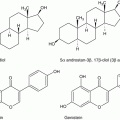© International Society of Gynecological Endocrinology 2016
Andrea R. Genazzani and Basil C. Tarlatzis (eds.)Frontiers in Gynecological EndocrinologyISGE Series10.1007/978-3-319-23865-4_66. Biomarkers of Ovarian Ageing
(1)
Division of Gynecology and Obstetrics, Department of Experimental and Clinical Medicine, University of Pisa, Pisa, Italy
6.1 Introduction
The ovary is the main regulator of female fertility, and its biologic clock is set to ensure reproductive success during a definite life stage. According to the evolutionary concept that organisms maximize fitness by promoting production of progeny, allocation of resources between reproductive and somatic functions is finely regulated during life [1]. Thus, it has been speculated that the premature ageing of the ovary when compared with somatic organs might result from increased energy demand for maintenance and repair processes in the soma compartment during ageing [1].
According to the human biologic clock, the gradual loss of female fertility becomes more dramatic in the late 30s with a steep decrease beginning after age 35, ending in menopause at mean age of 51 years [2]. This would preserve women from the physical stress of pregnancy in advanced age and maximize the length of time they can bear children [3]. As a result, increasing postponement of the first pregnancy represents a crucial factor in the widespread of subfertility in industrialized societies [4]. Given the intrapopulation variability of the reproductive life span [5], it is generally accepted that coping with this issue requires a careful reproductive counselling based on accurate predictive markers.
Ovarian functional decline with ageing has been so far extensively characterized in terms of gradual depletion of ovarian follicles and reduced ability to produce oocytes competent for fertilization and further development [2]. The analysis of the molecular and cellular aspects of follicle ageing would require careful consideration. In fact, oocytes and granulosa cells of primordial follicles might remain in a ‘resting’ phase for a long time, thus behaving as post-mitotic cells which can be required to start growing after 10–50 years. Furthermore, both primordial and growing follicles become exposed to environmental factors related to the ageing of the ovarian somatic compartment, and finally, the development of a competent oocyte intimately depends on the crosstalk between all compartments in the ovary.
For decades, research on reproductive ageing has been focusing on the so-called quantitative aspect of ovarian ageing, which has led to mathematical models predicting follicle loss on the basis of chronologic age without taking into account biologic markers [6]. When the concept of oocyte ageing as the main determinant of fertility decline has become clear [7], researchers have begun to expand investigations into the whole ovarian microenvironment in search of age-related changes with potential effects on follicle and oocyte competence.
Although it is generally accepted that ageing is a result of both inborn and environmental factors, most of the numerous theories of ageing share the concept that age-associated malfunction results from physiological accumulation of irreparable damage to biomolecules as an unavoidable side effect of normal metabolism and underline the importance of the capability of defensive repair.
More than a decade after the free radical theory of ovarian ageing first proposed by Tarin [8], biological and clinical research has provided numerous evidence that increased reactive oxygen species (ROS), which are among the most important physiological inducers of cellular injury associated with ageing [9], is a main determinant to follicle ageing [10, 11]. ROS generated by mitochondrial dysfunction is considered the main cause for telomere shortening, chromosomal segregation disorders, maturation and fertilization failures or oocyte/embryo fragmentation [11]. Looking for ROS aetiology and widespread, a relevant role has been ascribed to advanced glycation end products (AGEs), factors that may hamper ovarian stroma vessels, follicular growth, assembly of an efficient system of antioxidant enzymatic defence as well as development of an efficient perifollicular vascularization [12]. Further evidence for ROS in the ovarian follicle was obtained by research on stress signalling pathways in aged granulosa and cumulus cells [13, 14]. Enzymatic activity and protein level of superoxide dismutase (SOD), the enzyme that reacts with superoxide anion radicals to form oxygen and H2O2, were found to decrease with age, and lower levels of SOD activity are associated with unsuccessful IVF outcomes. Nevertheless, there are poor evidences for possible benefits from antioxidant treatments in humans, suggesting that further actors are involved in modulating stress adaptive response in the ovary during ageing [15].
6.2 Biomarkers
6.2.1 Antral Follicle Count (AFC)
The ovarian AFC and ovarian volume (OV) as determined by transvaginal ultrasound examination have been widely evaluated as a marker of ovarian responsiveness (OR) [16]. They are reliable indicators of OR and potential predictors of menopausal age. The intercycle variation of OV is more pronounced than that of AFC. The AFC is the number of antral follicles between 2 and 10 mm in size within both ovaries observed on transvaginal ultrasound examination on days 2–3 of the menstrual cycle. The AFC is currently the most reliable ultrasound parameter predicting age at menopause.
6.2.2 Follicle-Stimulating Hormone (FSH)
FSH is a glycoprotein produced by the anterior pituitary known to regulate the recruitment and growth of ovarian follicles from the antral stage to the Graafian follicle and furthermore regulate the androgen conversion to oestrogen. The ovarian granulosa cells are the target of FSH.
Stay updated, free articles. Join our Telegram channel

Full access? Get Clinical Tree




